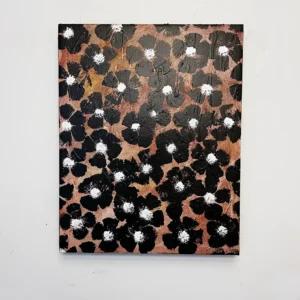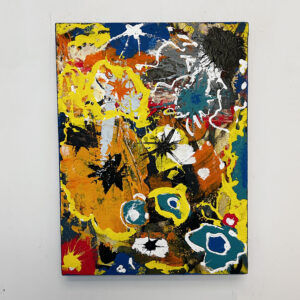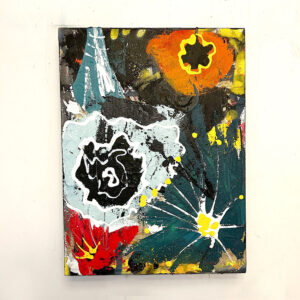Pittsburgh, often recognized for its industrial heritage and steel production, has a rich and diverse cultural history, particularly in the arts. The evolution of art in Pittsburgh reflects the city’s growth, economic changes, and the cultural melting pot that defines its identity. This article explores the historical trajectory of art in Pittsburgh, highlighting key periods and influential artists who have shaped the city’s artistic landscape.
Early Beginnings: The 18th and 19th Centuries
Art in Pittsburgh traces back to the late 18th century when the city was still in its formative years. Initially, artistic endeavors were closely tied to practical needs, such as mapmaking and documenting the area’s natural beauty. As Pittsburgh developed into a thriving industrial hub in the 19th century, the city’s wealth and population grew, fostering a more formal art scene.
The establishment of institutions like the Pittsburgh Academy (now the University of Pittsburgh) in 1787 provided a foundation for cultural growth. By the mid-19th century, wealthy industrialists began to patronize the arts, commissioning works and supporting the formation of art societies. The Pittsburgh Art Society, founded in 1874, marked a significant step in organizing and promoting local artists.
The Gilded Age: Patronage and Public Art
The late 19th and early 20th centuries, known as the Gilded Age, were transformative for Pittsburgh’s art scene. This period saw the rise of influential patrons like Andrew Carnegie, whose philanthropy had a lasting impact. Carnegie founded the Carnegie Museum of Art in 1895, one of the first institutions in the United States dedicated to contemporary art. The museum’s annual International Exhibition, now known as the Carnegie International, has been instrumental in bringing global contemporary art to Pittsburgh.
Public art also flourished during this era. The construction of grand public buildings and spaces often included art installations. Murals, sculptures, and other artworks became integral to Pittsburgh’s urban landscape, reflecting the city’s aspirations and cultural values.
The 20th Century: Modernism and Industrial Art
The 20th century brought significant changes to Pittsburgh’s art scene, influenced by broader artistic movements and the city’s industrial character. The rise of modernism in the early 1900s introduced new artistic styles and techniques, embraced by local artists and institutions.
One of the most iconic figures in Pittsburgh’s art history is Andy Warhol, born in 1928 in the city’s Oakland neighborhood. Warhol’s work and his role in the pop art movement had a profound impact on contemporary art worldwide. The Andy Warhol Museum, opened in 1994, stands as a testament to his legacy and continues to draw visitors from around the globe.
In addition to pop art, Pittsburgh became known for its industrial art. Artists like Samuel Rosenberg and John Kane depicted the city’s industrial landscapes and working-class life, blending realism with modernist techniques. Their work offered a unique perspective on Pittsburgh’s identity as an industrial powerhouse.
Post-War Era: Growth of Cultural Institutions
The post-World War II era was marked by the growth and diversification of Pittsburgh’s cultural institutions. The establishment of the Pittsburgh Center for the Arts in 1945 and the Society for Contemporary Craft in 1971 provided platforms for local artists to exhibit their work and engage with the community. These institutions played crucial roles in supporting and promoting regional talent.
The 1970s and 1980s saw the emergence of artist collectives and alternative art spaces. These groups often operated outside mainstream institutions, fostering experimental and avant-garde art. The Mattress Factory, founded in 1977, became a leading venue for installation art, showcasing site-specific works by artists from around the world.
Contemporary Scene: Diversity and Innovation
Today, Pittsburgh’s art scene is vibrant and diverse, reflecting the city’s evolving cultural landscape. The transformation of industrial spaces into cultural venues has been a defining trend. The Carrie Furnaces, once part of the Homestead Steel Works, now host art installations and cultural events, blending the city’s industrial heritage with contemporary creativity.
Local artists continue to push boundaries and explore new mediums. The city’s art schools, such as Carnegie Mellon University’s School of Art, play a significant role in nurturing young talent. Graduates often stay in Pittsburgh, contributing to the dynamic and innovative art community.
Public art remains a vital part of Pittsburgh’s identity. Programs like the Office of Public Art facilitate collaborations between artists and communities, resulting in murals, sculptures, and other works that enliven public spaces. The Sprout Fund’s mural program, which has produced over 50 murals since 2003, exemplifies the city’s commitment to public art.
Challenges and Opportunities
While Pittsburgh’s art scene is thriving, it faces challenges common to many cities. Funding and support for the arts can be inconsistent, and artists often struggle with issues like affordable studio space and access to resources. However, the city’s strong sense of community and collaborative spirit offer opportunities for growth and resilience.
Initiatives like the Greater Pittsburgh Arts Council advocate for the arts at the local and state levels, working to secure funding and resources for artists and cultural organizations. The rise of digital platforms and social media also provides new avenues for artists to reach audiences and showcase their work.
Conclusion: A City of Artistic Resilience
The evolution of art in Pittsburgh is a testament to the city’s resilience and adaptability. From its early beginnings to the vibrant contemporary scene, Pittsburgh has nurtured a diverse and dynamic art community. The city’s ability to blend its industrial heritage with innovative artistic practices sets it apart as a unique cultural hub.
As Pittsburgh continues to grow and change, its artists remain at the forefront, shaping the city’s identity and contributing to its cultural richness. The future of art in Pittsburgh looks promising, with new generations of artists poised to leave their mark on this storied city.


